By Lynn Perez
I started my Academic Services career last June, joining the team as a Library Assistant working in Collection Development. One of the main projects I’m working on consists of listing and scarcity checking part of the Legacy collection called the Black X.
What is the Black X Collection, I hear you say?
The collection covers approximately 132.3 metres of shelving and is housed in the South Store basement. It is home to the British Government publications including Board of Education, Department of Overseas Trade, Department of Transport, N.H.S and Treasury amongst others. It’s made up of a wide range of items ranging from reports to posters, flyers to books and even some microfilm.
The collection dates back to the mid 1800’s with documents referencing the First and Second World Wars. One of the interesting things I’m finding is, a lot of early documents are in much better condition than its more recent counterparts. This is mainly due to the quality of paper used in early production.
The main objective of listing the collection is to make a comprehensive record of all the assets held. This also involves finding out if items are held by other libraries. To do this I use COPAC’s search facilities which allows me to find out exactly which libraries hold identical assets and record the findings. Other parts of the checking process involve noting item condition, if torn or fragile placing in protective covers, checking to see if barcodes are present and if the document has a ISDN number etc.
What is COPAC?
Copac brings together the catalogues of about 90 plus major U.K. and Irish libraries. Making it a valuable asset to use when checking the rarity of an item. This will inform our decision to keep or gift an item to another library in the future.
History repeating….
As I make my way through the collection I’ve come across many interesting historical documents. At the moment I’m working my way through Britain and Europe folders which hold items from the Labour Committee for Europe, Keep Britain Out Campaign and The European Movement amongst others. Covering articles on the For and Against the Common Market campaigns dating back to the late 60’s early 70’s. It’s been really interesting to uncover these, especially because of the current politically significance at the moment in the UK with ongoing Brexit negotiations.
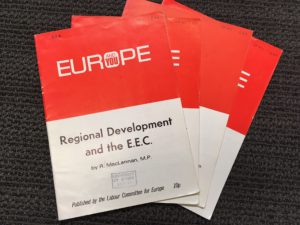
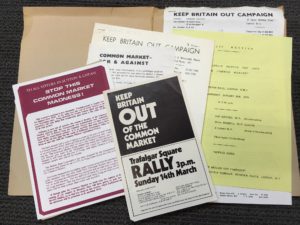
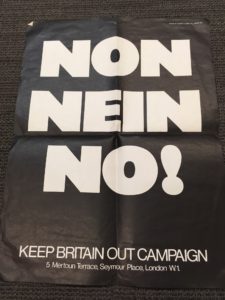
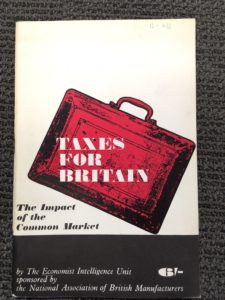
In the collection there are many more items of significance and ones which are unique to UoS. Highlighting why making the Green, Blue and Black X Legacy Collections accessible and usable is so important.
Interesting Fact about the Common Market
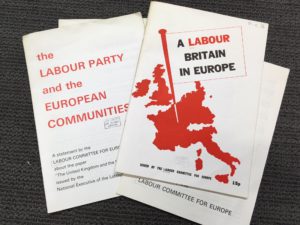
Britain and Europe and Labour Committee for Europe
What year did Britain join the Common Market? Answer 1973.
Britain joined the common market in the first week of 1973. This was celebrated by a “Festival of European, Culture” put on by the Conservative government of the time, headed by Prime Minister Edward Heath.
It’s not all print
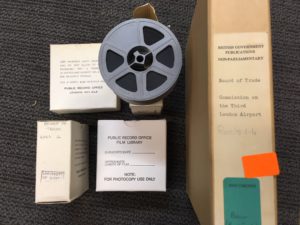
Board of Trade Reels
I’m also uncovering records on microfilm. So far I have listed 10 reels of film about the Third London Airport Stage 5 proposal from the records of the Department of Trade and Industry. These can be viewed within the Library using the Microfiche reader located near the Info Hub.
Uncovering the hidden
I feel very lucky to be uncovering these hidden gems held within our Library Stores.
It’s meticulous, precise work and can be a little dirty at times but always very rewarding. I’m constantly learning about areas of history that I’d never come across before and seeing underlying themes emerge which is fascinating. The best part of the project though is knowing I have played a small part in enabling students and academics access to these amazing historical resources.